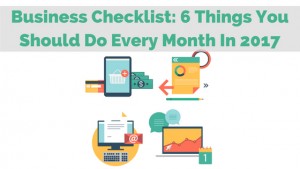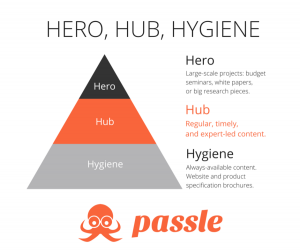Guest posting is not the be-all and end-all promotional strategy some blogging gurus make it out to be.
Can it work to grow your audience and your list? Absolutely.
Can it also fizzle and be a lot of work for not much reward?
Absolutely.
When clients book me for my Traffic Bump package, they are often looking for strategic ways to get their blogs in front of a larger audience, so one of the first questions I ask them is, “What would be a dream guest blogging opportunity for you?”
And I almost always hear, “Huffington Post” in reply.
But let me let you in on a little secret: Huffington Post doesn’t convert.
OK, I should say that it rarely converts. I have heard mythical stories of people who got an article published with Huffington Post and their lists EXPLODED with growth, but these tales are about as common as Yeti sightings or unicorns. (In other words: pretty dang rare.)
People think that the bigger the site, the bigger the exposure, the bigger their conversion rate will be with a guest post, but this is not always the case. There are more factors at play.
A tale of two guest posts.
Way back in the day, when I was focused on trying to turn my food blog into a business, I listened to all the gurus’ advice, and started focusing on getting guest post opportunities.
By sheer dumb luck and serendipity, I landed a regular guest posting opportunity with the (now defunct) Whole Living magazine, one of Martha Stewart’s properties.
For an organic food blogger? This was like the ultimate. MARTHA FREAKING STEWART (or, at least one of her online editors) WANTED ME!!!
As you can imagine, I was over the moon!
I ended up writing five blog posts for them over the course of a few months before the magazine suddenly folded. (I like to think my blogging had nothing to do with the fate of the publication!)
At around the same time, I applied to be a guest blogger for a smaller blog about saving money called And Then We Saved. My niche was people who want to save money on organics, and while the blog wasn’t about food, per se, it seemed like a good fit.
So, five posts for a major, national magazine website with the backing of the Martha Stewart Brand and part of her media empire, versus a single post for a very mid-level blog about saving money.
Which do you think garnered me the most opt-ins?
It was the mid-level blog. I could trace (at last count) more than 600 opt-ins from that single post. It more than doubled my list.
Whole Living, on the other hand, only sent me three (THREE!) opt-ins that I could trace directly to my posts.
That is a huge freaking difference! But why?
Bigger is not always better.
What I learned from this experience is that it’s not always the size of the audience that counts, but the quality.
The Whole Living audience was definitely interested in organic food, and probably at least a portion of them were interested in saving money. But because that’s what the WHOLE SITE was about, they had tons of other resources and references to turn to. They didn’t really need me or my opt-in freebie, as sad as it is for me to say.
Fans of And Then We Saved, on the other hand, were all about saving money, but very little of the rest of the site was focused on food, let alone organic food. So when offered my free opt-in about how to save money on organics, they JUMPED at it.
Though the total audience was smaller, they were more predisposed to be interested in what I had to offer.
How to rank guest posting opportunities.
So, how can you separate the wheat from the chaff when it comes to guest blogging opportunities? How can you decide which will be worth your time and energy?
I have four simple tools to help you rank your opportunities:
- Think Sideways
The most important thing you can do is think sideways. This means consider posting opportunities that are outside your particular niche, but related. For example, a massage therapist might pair with a fitness or health coach. A jewelry designer might want to guest post for an art or interior design blog. Look for a new audience that might be interested in your message. This free worksheet here can help you think sideways while you brainstorm.
- Make a List
Yes, this is a low-tech tool, but you’re going to want to start making a list of sites where you might want to contribute. But where to start? The Think Sideways worksheet should have given you a list of niches that are also basically keywords. Take each of your keywords and plug them into Google along with some of the following terms in quotation marks:
- “submission guidelines”
- “guest post guidelines”
- “accepting guest posts”
- “contribute an article”
- “submit content”
- “guest post”
- “want to write”
- “write for us”
- “add a post”
- “become a contributor”
- “submit your post”
With each search, you will turn up websites that are actively looking for guest posts. Start a list of these websites, along with links to the page that lists their submission guidelines or how to submit, and also make note of their social media accounts. You’ll need them for the next steps, in which we will determine the priority you’ll assign each submission.
- “submission guidelines”
- Compare page ranks
Once you have your list, you want to look at their page ranks and how they compare to yours. If you guest post for a site with a lower page rank than yours, you aren’t going to get much SEO juice from the link, so it may be lower on your priority list. I like to use Bulk DA Checker, because you can input up to 200 URLs for free. The tool will show you the Mox domain authority (out of 100) and Google Page Rank. Add the numbers to your list and you can sort them to show which sites have the most domain authority or highest page rank. Any numbers higher than your own means that the page has more SEO juice than you, and will be a good use of your time. Just a note: This isn’t an exact science. If a site ranks lower than you and you still think it would be a good match (or you have a personal relationship with the owner) go for it! This is just to give you more information.
- Check out their social reach.
Finally, you want to make note of their social reach. Can they cast their social net wider than yours? The easiest way to check this is to make note of their social follower numbers and compare them to yours. But if you’d like a little more in-depth analysis, you can use a tool like LikeAnalyzer, which gives your page —and any frenemies page you put in — a score out of 100 compared to similar profiles. Simply Measured has a suite of tools that will run similar comparison reports for other media channels — including Twitter and LinkedIn. It offers a 14-day free trial.
Once you’ve compiled your list and put in some numbers, you can easily compare which sites might give you the biggest boost for your blog post.
As I mentioned before, this isn’t an exact science, but this is the method my researcher and I use to compile the Frenemies Report as part of our Traffic Bump Package. We break the list down into A-list, B-list, and C-list blogging opportunities with the work done for you.
You can do the same thing with some of these free tools and create your own outreach plan for guest blogging that’s a BIT more scientific than just throwing spaghetti at a wall to see what sticks!
Digital & Social Articles on Business 2 Community(49)









